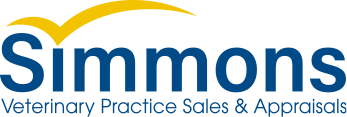When evaluating your veterinary practice, you do not want to be surprised by what you find out. That is why it is necessary to have a current knowledge of its value as well as what you can do to increase it. Read on to learn the steps you can take to help your practice be as valuable as possible.
Follow These Tips
Not long ago, the owner of a $1.5 million-grossing veterinary practice told me that he was thinking of selling to an associate within the next six months. He believed his practice was worth about $1.4 million, so he was displeased when his 3% profitability practice did not value for much more than his tangible assets.
The seller paid his accountant to prepare excellent monthly financial statements but said he did not pay much attention to them because he did not understand them. He did not understand why his practice received such a low value, but a cursory review of his financial statements showed his drug and supply costs were in the neighborhood of 34% of revenue, which is 10+% points higher than average.
The bottom line is that my client’s resistance to learning the basics of financial accounting kept him from knowing how well his practice was performing.
Step 1: Be Proactive.
The first and most important step is to have a basic understanding of your veterinary practice’s financials. Previously, an owner could operate a practice unintentionally, and the practice would likely be profitable regardless. Those days are rapidly disappearing.
Step 2: Be Informed.
Read the VetPartner’s The No-Lo Practice: Avoiding a Practice Worth Less
An owner must have a basic understanding of how practices are valued and appreciate those factors that drive value. At Simmons, we make it easy to find the resources you need to learn, so be sure to check our website often or call your Simmons representative for expert advice.
Step 3: Be Patient.
It takes time to implement and realize results from any corrective procedures designed to change your practice operations. It is not enough to initiate change in the short run, so sufficient time must be allowed to determine whether the change is sustainable. In most cases, you should allow for three or more years.
Step 4: Know What Your Practice’s Value Is Today.
We can take some guidance from Alice in Wonderland when the Cheshire Cat asks Alice where she wants to go, and she responds that she does not know. He answers her, “Then, it doesn’t matter which way you go.”
The wisdom of the Cheshire Cat can be applied to our practice life. To create effective change, we need to know where we start and where we want to go. In most cases, it is essential to know where your practice is today. These steps will help you establish where you are to determine where you want to go.
- Decide how soon you wish to retire.
- Complete the VetPartners profitability worksheet.
- Perform an appraisal
Appraisals
It can be very tempting to cut corners with a free appraisal or verbal estimate, but a professional, written appraisal is necessary to truly assess your veterinary practice’s worth. When it comes to the most significant investment of your lifetime, a homemade or outdated appraisal system is insufficient. Trust the experts at Simmons to provide an accurate, transparent appraisal.
Step 5: Analyze Your Practice.
Whether you perform the work yourself or hire a consultant, it is important to know why your practice is or is not worth what you think it should be. Too much is at stake for owners not to do one or the other. The goal here is to identify the areas within your practice where changes might be made.
Begin by analyzing your income statement, starting with the significant expense groups:
- Costs of goods sold, including pharmacy, supplies, lab fees, and imaging
- Cost of support staff
- Cost of professional staff, including a fair market salary for the owner DVM
Next, express each of these as a percent of revenue. To interpret this data, consider a % as a fraction (i.e., an upper and lower #). If only one or two of the three expenses have high percentages, look for cause and solution on the upper number of the fraction. If all three percentages show high values, the major problem is the lower number of the percent fraction. The most likely cause is too little revenue and low fees.
Step 6: Set Goals.
Determine your objectives and where you want to go.
If the value is good, you should keep up the good management, understand the drivers of value, and perform a profitability worksheet at regular intervals, preferably quarterly.
If the value is less than desired, resolve to put in the work to improve the practice’s value. Accept the low value of your hospital as sell before you put in more work that does not return value.
Step 7: Make a Plan.
Develop a list of possible corrective measures you might institute. Keep in mind the goals from Step 5 and the available time frame you have to work.
- Where do I want to go?
- Where do I believe I can go?
- How much time will I have to make changes?
Prioritize the corrective measures list with the most beneficial and most achievable at the top. For each possible corrective measure, define the following:
- How the success or failure of each corrective procedure will be determined.
- How the success or failure of each corrective procedure will be measured.
- When success or failure will be measured.
Step 8: Institute Your Plan.
Perform scheduled measurements so you can make adjustments. Repeat the process.
Step 9: Perform a Follow-Up Appraisal.
Assess the results of your plan and determine if your practice’s value has improved. The timing of the follow-up appraisal varies depending on the exit timing of the owner, but usually at the first or second anniversary of the original appraisal.
Step 10: Use Budgets.
When well thought out and properly implemented, the budget process can be a very effective process to recover lost value.
Simmons Helps Your Veterinary Practice’s Value
It can feel overwhelming to take proactive steps to increase your veterinary practice’s value if you do not understand how. At Simmons Veterinary Practice Sales and Appraisals, we have helped practice owners like you through expert guidance and helpful resources. Reach out to your Simmons advisor today to learn how to make the most of your veterinary practice value.
This article was originally posted on www.simmonsinc.com. Any reproduction on any other site is prohibited and a violation of copyright laws.



